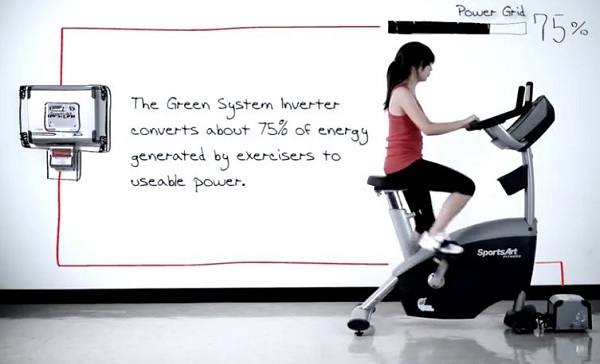Slowly but surely, more gyms around the country are turning all that fat-burning, sweat-producing running and spinning into electricity.
SportsArt Fitness, a company that makes exercise machines specifically designed to pipe human-generated power to the grid, says the appropriately named “Green Room” at Tennessee Tech University is the latest gym to go this route with its gear.

At Tennessee Tech, a total of 16 ellipticals, recumbent cycles and upright cycles employ SportsArt’s “Green System,” replacing older equipment.
“We use a lot of electricity in the fitness center and any time that we can do something that reduces that, that’s what we need to do,” Suzann Hensley, assistant director for campus recreation, said in an emailed statement. “This equipment was available to us, and we thought, ‘Why not?’”
According to SportsArt, the system consists of a “booster box,” connected to a specially designed cardio machine, that grabs the energy produced by the huffing and puffing patrons. An inverter – about the size of a stereo receiver – then converts the direct current energy produced into alternating current that can flow onto the grid.
The company claims its system can convert 75 percent of the power generated into usable energy, double or even triple the performance of other green exercise systems.
To what degree the system will offset a facility’s energy consumption depends, of course, on how often the machines are in use – and how hard the exercises are going. A “pod” of 10 machines at maximum capacity can produce up to 2 kilowatt-hours of electricity in an hour, SportsArt said, which would be some pretty serious effort.
Some people wonder whether these systems will pay off financially for a gym, given the investment it takes to install them. But whether they do or not might be missing the point: Each kilowatt-hour generated means one less kilowatt coming from a power plant (likely to be powered by fossil-fuels). Plus, such systems could be attractive for users, especially when paired with Fit for Green or EcoFit applications that allow people to chart how much power they’ve produced and share it with others. And they do seem to be spreading. SportsArt has also outfitted gyms in Southern California and in Victoria, Canada. In addition, the company ReRev lists dozens of gyms at universities who have taken advantage of its retrofits on anywhere from four to 36 machines apiece.